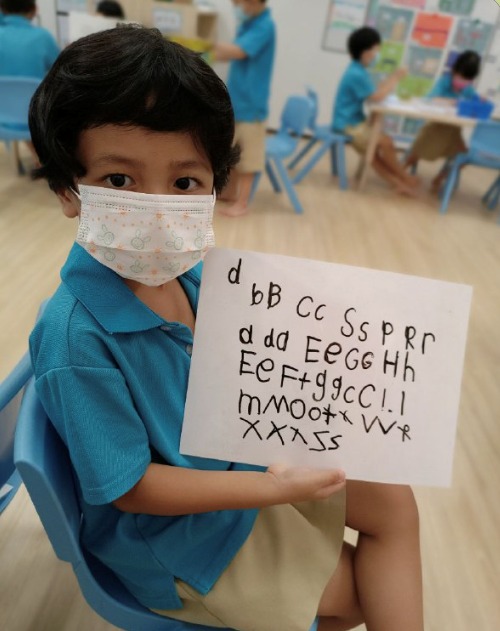Refreshed Kindergarten Curriculum Framework Spells out Learning Outcomes for Children
21 Feb 2013

Senior Minister of State for Law and Education Indranee Rajah visited Ascension Kindergarten at the launch of the refreshed Kindergarten Curriculum Framework (KCF).
A new version of the Kindergarten Curriculum Framework (KCF) will guide pre-school educators and parents by providing a set of learning outcomes for children upon completion of Kindergarten.
“The thrust of what we are trying to do is to make sure that everybody meets a certain standard,” said Senior Minister of State (SMS) for Law and Education Indranee Rajah at a visit to Ascension Kindergarten on 20 February. She also emphasised the importance of developing confidence and social skills during pre-school years.
Pre-school centres are strongly encouraged to use these broad teaching and learning guidelines in designing and implementing an age appropriate curriculum, so as to prepare children for further learning when they make the transition to Primary One.
New and Updated Aspects of the KCF
“We would like parents to come round to the idea that it is not about gaining numbers and words, but gaining an attitude and aptitude, and allowing children to develop their innate abilities,” said SMS Indranee.

Purposeful play is one of the teaching approaches advocated by the refreshed Kindergarten Curriculum Framework.
The KCF is a child-centred framework built upon the basis of children as curious, active and competent learners. Designed based on research, international trends and consultation with experts, six learning areas are outlined – Aesthetics and Creative Expression, Discovery of the World, Language and Literacy, Motor Skills Development, Numeracy and Social and Emotional Development.
For example, in numeracy, children should learn to count up to 10 and develop number sense, which is an understanding of the concept of numbers and their relationships. They should be able to understand ‘more’, ‘less’ and part-whole relationships. For instance, when they see 5 apples, they should recognise the number of apples and understand that it can be made up of two and three apples or one and four apples.
For language and literacy, children should be able to write letters of the alphabet and copy simple words. At a younger age, they should also strengthen eye-hand coordination in order to hold writing tools. For example, activities such as threading beads, cutting paper and drawing with crayons can help to strengthen hand and finger muscles and help them control their movements. This would prepare them for Primary One where they will progress to skills in handwriting, spelling and writing sentences.

Children at Ascension Kindergarten explore ideas and strengthen eye-hand coordination by drawing their structure design on paper before building them with recycled materials.
“By specifying learning goals, over teaching can be avoided”, said Mrs Dianne Seet, Principal of Ascension Kindergarten, “In the long term, over teaching causes children to stop thinking, asking and learning because they are done with rote learning. In life, the only thing constant is change, so we want children to be motivated when it comes to learning new things.”
At Ascension Kindergarten, instead of rote learning, teachers explore ideas with children and encourage their interest in acquiring new knowledge. Children would share bits of news that they hear about, such as the arrival of giant pandas from China.
“Parents have also followed suit by sharing news with their children,” said teacher, Ms Janice Ong.
Training and Resources to Support Implementation
While the framework outlines broad guidelines and goals, the implementation in pre-schools boils down to the role played by teachers and their understanding of the children based on daily interactions.
An educator’s guide will be rolled out by the Ministry of Education (MOE) this year, to help teachers translate the framework into quality learning experiences. Pre-school teachers can also look forward to resources and training conducted by MOE.
“This framework helps principals like me to understand what kind of training my teachers need,” said Mrs Seet.
The Refreshed Kindergarten Curriculum Framework will be distributed to all kindergartens and childcare centres, as well as made available online. Parents can also refer to the Parents Guide on the MOE website.






.jpg)
.jpg)

